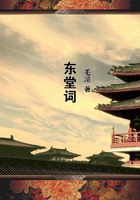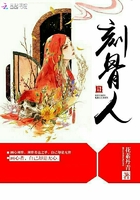THE RELIGION OF THE BABYLONIANS AND ASSYRIANSThe Sumero-Akkadians and the Semites.
For the history of the development of the religion of the Babylonians and Assyrians much naturally depends upon the composition of the population of early Babylonia.There is hardly any doubt that the Sumero-Akkadians were non-Semites of a fairly pure race, but the country of their origin is still unknown, though a certain relationship with the Mongolian and Turkish nationalities, probably reaching back many centuries--perhaps thousands of years--before the earliest accepted date, may be regarded as equally likely.Equally uncertain is the date of the entry of the Semites, whose language ultimately displaced the non-Semitic Sumero-Akkadian idioms, and whose kings finally ruled over the land.During the third millennium before Christ Semites, bearing Semitic names, and called Amorites, appear, and probably formed the last considerable stratum of tribes of that race which entered the land.The name Martu, the Sumero-Akkadian equivalent of Amurru, "Amorite", is of frequent occurrence also before this period.The eastern Mediterranean coast district, including Palestine and the neighbouring tracts, was known by the Babylonians and Assyrians as the land of the Amorites, a term which stood for the West in general even when these regions no longer bore that name.The Babylonians maintained their claim to sovereignty over that part as long as they possessed the power to do so, and naturally exercised considerable influence there.The existence in Palestine, Syria, and the neighbouring states, of creeds containing the names of many Babylonian divinities is therefore not to be wondered at, and the presence of West Semitic divinities in the religion of the Babylonians need not cause us any surprise.
The Babylonian script and its evidence.
In consequence of the determinative prefix for a god or a goddess being, in the oldest form, a picture of an eight-rayed star, it has been assumed that Assyro-Babylonian mythology is, either wholly or partly, astral in origin.This, however, is by no means certain, the character for "star" in the inscriptions being a combination of three such pictures, and not a single sign.The probability therefore is, that the use of the single star to indicate the name of a divinity arises merely from the fact that the character in question stands for /ana/, "heaven." Deities were evidently thus distinguished by the Babylonians because they regarded them as inhabitants of the realms above--indeed, the heavens being the place where the stars are seen, a picture of a star was the only way of indicating heavenly things.That the gods of the Babylonians were in many cases identified with the stars and planets is certain, but these identifications seem to have taken place at a comparatively late date.An exception has naturally to be made in the case of the sun and moon, but the god Merodach, if he be, as seems certain, a deified Babylonian king, must have been identified with the stars which bear his name after his worshippers began to pay him divine honours as the supreme deity, and naturally what is true for him may also be so for the other gods whom they worshipped.The identification of some of the deities with stars or planets is, moreover, impossible, and if êa, the god of the deep, and Anu, the god of the heavens, have their representatives among the heavenly bodies, this is probably the result of later development.[*]
[*] If there be any historical foundation for the statement that Merodach arranged the sun, the moon, the planets, and the stars, assigning to them their proper places and duties--a tradition which would make him the founder of the science of astronomy during his life upon earth--this, too, would tend to the probability that the origin of the gods of the Babylonians was not astral, as has been suggested, but that their identification with the heavenly bodies was introduced during the period of his reign.
Ancestor and hero-worship.The deification of kings.
Though there is no proof that ancestor-worship in general prevailed at any time in Babylonia, it would seem that the worship of heroes and prominent men was common, at least in early times.The tenth chapter of Genesis tells us of the story of Nimrod, who cannot be any other than the Merodach of the Assyro-Babylonian inscriptions; and other examples, occurring in semi-mythological times, are /En-we-dur-an-ki/, the Greek Edoreschos, and /Gilgame?/, the Greek Gilgamos, though Aelian's story of the latter does not fit in with the account as given by the inscriptions.In later times, the divine prefix is found before the names of many a Babylonian ruler--Sargon of Agadé,[*] Dungi of Ur (about 2500 B.C.), Rim-Sin or Eri-Aku (Arioch of Ellasar, about 2100B.C.), and others.It was doubtless a kind of flattery to deify and pay these rulers divine honours during their lifetime, and on account of this, it is very probable that their godhood was utterly forgotten, in the case of those who were strictly historical, after their death.
The deification of the kings of Babylonia and Assyria is probably due to the fact, that they were regarded as the representatives of God upon earth, and being his chief priests as well as his offspring (the personal names show that it was a common thing to regard children as the gifts of the gods whom their father worshipped), the divine fatherhood thus attributed to them naturally could, in the case of those of royal rank, give them a real claim to divine birth and honours.An exception is the deification of the Babylonian Noah, Ut-napi?tim, who, as the legend of the Flood relates, was raised and made one of the gods by Aa or Ea, for his faithfulness after the great catastrophe, when he and his wife were translated to the "remote place at the mouth of the rivers." The hero Gilgame?, on the other hand, was half divine by birth, though it is not exactly known through whom his divinity came.















